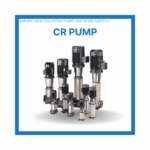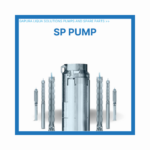Rake Screen
Rake screens play a crucial role in separating solids from process water or wastewater. As water flows through a filtering grid composed of bars, the solid particles are gathered and transported by specialized cleaning combs to the upper section of the screen. The unique shape of the bars facilitates the efficient removal of solids and ensures thorough cleaning of the combs. Whether installed in a reinforced concrete channel or a dedicated stainless steel housing, the rake screen effectively addresses the challenge of separating solids from liquids.
For more information about our rake screens, feel free to contact us!
How to Choose The Right Rake Screen?
Choosing the right rake screen for separating solids in water treatment is essential to ensure efficient and effective removal of debris. Here are some steps to guide your selection process:
- Understand Your Requirements:
- Determine the specific purpose of the rake screen. Are you using it for drinking water treatment, wastewater treatment, or another application?
- Consider the following factors:
- Flow Rate: Calculate the maximum flow rate (in liters per second or gallons per minute) that the rake screen needs to handle.
- Screening Capacity: Assess the expected volume of solids that the screen must capture.
- Channel Width: Measure the width of the channel where the rake screen will be installed.
- Type and Size of Solids: Identify the size range of solids you want to separate. This will help determine the appropriate bar spacing.
- Types of Rake Screens:
- There are various types of rake screens available:
- Static Wedge Wire Screens: These screens have a fixed grid of bars. They are suitable for fine screening applications.
- Continuous Belt Screens: These screens use a moving belt with bars to capture solids.
- Reciprocating Rakes: These rakes move back and forth to collect debris.
- Drum Screens: These cylindrical screens rotate to separate solids.
- Bar Screens: Traditional bar screens with vertical bars.
- Choose the type that aligns with your requirements and available infrastructure.
- There are various types of rake screens available:
- Design Features to Consider:
- Automatic Start-Stop Level Sensor: Detects water levels before and after the screen, ensuring efficient operation.
- Grit-Sand Damage Prevention: Place the screen directly after a drop in the channel floor. This prevents material buildup before the screen.
- Robust Construction: Opt for stainless steel teeth that can handle heavy materials without breaking.
Remember that selecting the right rake screen involves balancing technical specifications, cost, and practical considerations.
Get Rake Screen From PT GLS
PT Gapura Liqua Solutions reflect our commitment to control the product quality by working closely with our strategic business partners, mostly leading components manufacturing firms in the field of water treatment, waste water treatment, desalination, and resources recovery.
You will guarantee product originality, advisory for your water system, and taking care by our skilled engineer to meet your business goals. Contact us now!






